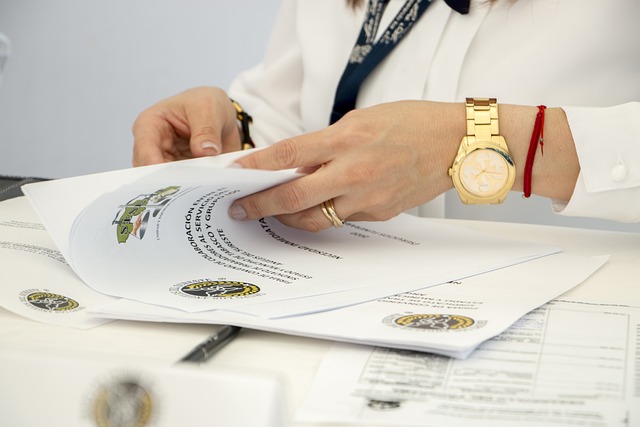Translating UK editorial columns for a global audience demands a blend of linguistic skill, cultural understanding, and nuanced handling of tone and humor. UK Editorial Columns Translation Services specialize in preserving the original columnist's voice and style across languages, addressing challenges like idiomatic expressions, colloquialisms, and cultural references unique to English-speaking countries. These services leverage advanced technologies, quality assurance processes, and industry expertise to deliver high-quality translations that engage international readers while respecting cultural roots. The future of this field looks promising with ongoing advancements in technology and a growing global audience demanding accurate, culturally sensitive content.
In today’s globalized world, capturing a columnist’s unique voice across languages is essential for engaging international audiences. This article explores the intricacies of UK Editorial Columns Translation Services, delving into strategies to preserve style, tone, and humor in translated content. From understanding nuanced language to adapting cultural contexts, we provide insights on techniques that ensure consistency. Discover the role of human translators versus machine translation, explore case studies, and learn quality assurance methods for accurate translations that resonate with diverse readers.
- Understanding Columnist Voice: Capturing Nuance and Style
- The Role of UK Editorial Translation Services
- Adapting to Cultural Contexts in Translation
- Preserving Tone and Humor in Transactional Text
- Techniques for Consistent Voice Across Languages
- Machine Translation vs. Human Translators: When to Use Each
- Case Studies: Successful Column Translation Projects
- Quality Assurance Checks for Accurate Column Translations
- Future Trends in UK Editorial Columns Translation
Understanding Columnist Voice: Capturing Nuance and Style

Understanding Columnist Voice is a delicate art, especially when translating UK editorial columns for a global audience. Each columnist develops a unique style and tone that engages their readers; capturing this essence in another language is no easy feat. Nuance plays a pivotal role; a subtle joke or play on words might not translate well, requiring a skilled translator to preserve the intended meaning and humour.
The style of a column often reflects the writer’s personality and perspective, so it’s crucial for translation services to embrace this individuality. This involves not just translating words but also understanding the cultural context in which the columnist writes. By doing so, UK Editorial Columns Translation Services can ensure that the translated content resonates with readers worldwide while maintaining the distinct voice that makes each column unique.
The Role of UK Editorial Translation Services

In today’s globalised media landscape, maintaining the unique voice and style of a columnist across languages is no easy feat. This is where UK Editorial Translation Services step in as indispensable tools for preserving authenticity. These services employ professional translators who not only grasp the nuances of language but also understand the subtleties of different cultural contexts. They play a pivotal role in ensuring that the column’s original intent, tone, and charm are conveyed accurately in the target language.
UK-based translation companies offer expertise tailored to editorial content, including columns. Their translators are adept at navigating the challenges of translating idiomatic expressions, colloquialisms, and cultural references unique to English-speaking countries. By leveraging advanced technologies and quality assurance processes, these services deliver high-precision translations that capture the essence of the original text, making them invaluable for publications aiming to reach a diverse international audience while preserving the integrity of their columnists’ voices.
Adapting to Cultural Contexts in Translation

In the realm of UK editorial columns, translation services play a pivotal role in bridging cultural gaps. When translating columns, it’s essential to go beyond mere word-for-word substitutions and adapt to the cultural context. Idioms, metaphors, and colloquialisms that hold significance in one culture might not carry the same weight or meaning elsewhere. For instance, a playful British reference could lose its edge or even be misunderstood by an international audience.
Professional translation services understand these nuances and employ native speakers who grasp the subtle differences. They ensure that the column’s tone, humor, and cultural references are preserved while making it accessible to readers worldwide. This level of adaptation is crucial for maintaining the author’s voice and keeping the content engaging across diverse markets, thereby enhancing the overall reading experience for an international audience.
Preserving Tone and Humor in Transactional Text

When translating UK editorial columns for a global audience, preserving the original tone and humor is an art. Transactional text, especially in journalism, requires a delicate balance to ensure the intended meaning and nuances are conveyed accurately. Professional translation services understand that words carry different cultural weights, so they employ linguists who not only grasp the language but also appreciate its subtleties.
Humor, in particular, can be challenging to translate as it often relies on puns, wordplay, and cultural references. UK columns are known for their witty and sarcastic tone, which demands a skilled hand to adapt without losing its essence. Reputable translation services invest in native speakers who can capture the essence of the column’s voice, ensuring that readers worldwide enjoy and connect with the content as intended.
Techniques for Consistent Voice Across Languages

Capturing a columnist’s unique voice in translation is an art, especially when aiming for accuracy and consistency across languages. UK editorial columns often require specialist translation services to maintain the author’s intent and style. One effective technique is to work closely with the translator, providing them with detailed context and any specific terminology used, ensuring they grasp the column’s tone and target audience.
Additionally, establishing a consistent voice involves creating style guides or templates that outline grammatical choices, vocabulary, and even sentence structures peculiar to the columnist. These guidelines help translators produce work that mirrors the original writer’s voice. Regular feedback sessions between the translator and the editor are also beneficial, allowing for real-time adjustments and ensuring the translated column remains true to its source.
Machine Translation vs. Human Translators: When to Use Each

In today’s digital age, the world of translation services is evolving rapidly, offering a plethora of options for content creators, especially those involved in UK editorial columns. When it comes to capturing the essence and voice of an editorial column in another language, the choice between machine translation (MT) and human translators is paramount. Machine translation has undoubtedly made significant strides, providing quick and cost-effective solutions. It’s particularly useful for basic, straightforward content where accuracy isn’t a critical factor. However, when it comes to nuanced writing, such as UK editorial columns, human translators shine. They can grasp the subtleties, cultural nuances, and tone of the original text, ensuring that the translated column resonates with the target audience while maintaining the author’s distinct voice.
Human translators are invaluable for complex texts that demand precision and a deep understanding of the source material. They can adapt the translation to suit the target culture, ensuring the column connects on a deeper level with readers in different linguistic landscapes. For UK editorial columns aiming to engage diverse international audiences, human translators skilled in local languages and cultural nuances are essential. They ensure the translated content not only conveys the intended message but also captures the essence of the author’s voice, fostering a sense of connection and authenticity among readers worldwide.
Case Studies: Successful Column Translation Projects

Successful translation projects for UK editorial columns often hinge on several key factors. One prominent example involves a tech-focused column where a specialist translator with deep industry knowledge played a pivotal role. The translator not only ensured precise technical terminology but also preserved the writer’s unique style and wit, resulting in a seamless read for the target audience. This project highlighted the importance of choosing translators who are not just linguistic experts but also understand the subject matter.
Another notable case involves a food column known for its vivid descriptions and cultural insights. The translation team employed a native speaker from the target culture, allowing them to capture the essence of regional culinary references and idiomatic expressions. By maintaining the original tone and voice, the translated column resonated well with readers, showcasing how cultural sensitivity can elevate the quality of UK editorial columns translation services.
Quality Assurance Checks for Accurate Column Translations

When translating UK editorial columns, ensuring accuracy is paramount to preserving the author’s voice and intent. Quality Assurance (QA) checks are an indispensable part of this process. These rigorous evaluations involve multiple stages, including a thorough review of grammatical structure, vocabulary choice, and idiomatic expressions.
Translation experts skilled in UK English play a pivotal role in these QA processes. They scrutinize each translated column, verifying that the meaning, tone, and style remain consistent with the original text. This meticulous attention to detail guarantees that the translated column resonates authentically with the target audience, maintaining the author’s unique voice within the context of a different linguistic landscape.
Future Trends in UK Editorial Columns Translation

The future of UK editorial columns translation services looks set to be shaped by several emerging trends. With the ever-growing global audience, there is an increasing demand for high-quality translations that not only convey the meaning but also capture the nuances and tone of the original column. This requires translators who are not just linguistically skilled but also have a deep understanding of the UK cultural context and current affairs.
Technological advancements, such as Machine Translation (MT) and Artificial Intelligence (AI), will continue to play a significant role. While MT can provide rapid translations, human translators will remain indispensable for refining the output, ensuring accuracy, and preserving the column’s distinct voice. As AI tools improve, they could assist in pre-editing and post-editing tasks, allowing translators to focus more on the creative aspects of translation.
In the realm of UK editorial columns translation services, understanding and capturing a columnist’s unique voice is paramount. By combining nuanced style, cultural adaptability, and tone preservation, professionals can ensure accurate and engaging translations that resonate with diverse audiences. As technology evolves, human translators remain indispensable for their creativity and context-specific expertise. Leveraging techniques for consistent voice across languages and quality assurance checks, the future of UK editorial columns translation promises precision, loyalty to the original intent, and enhanced cross-cultural communication.
